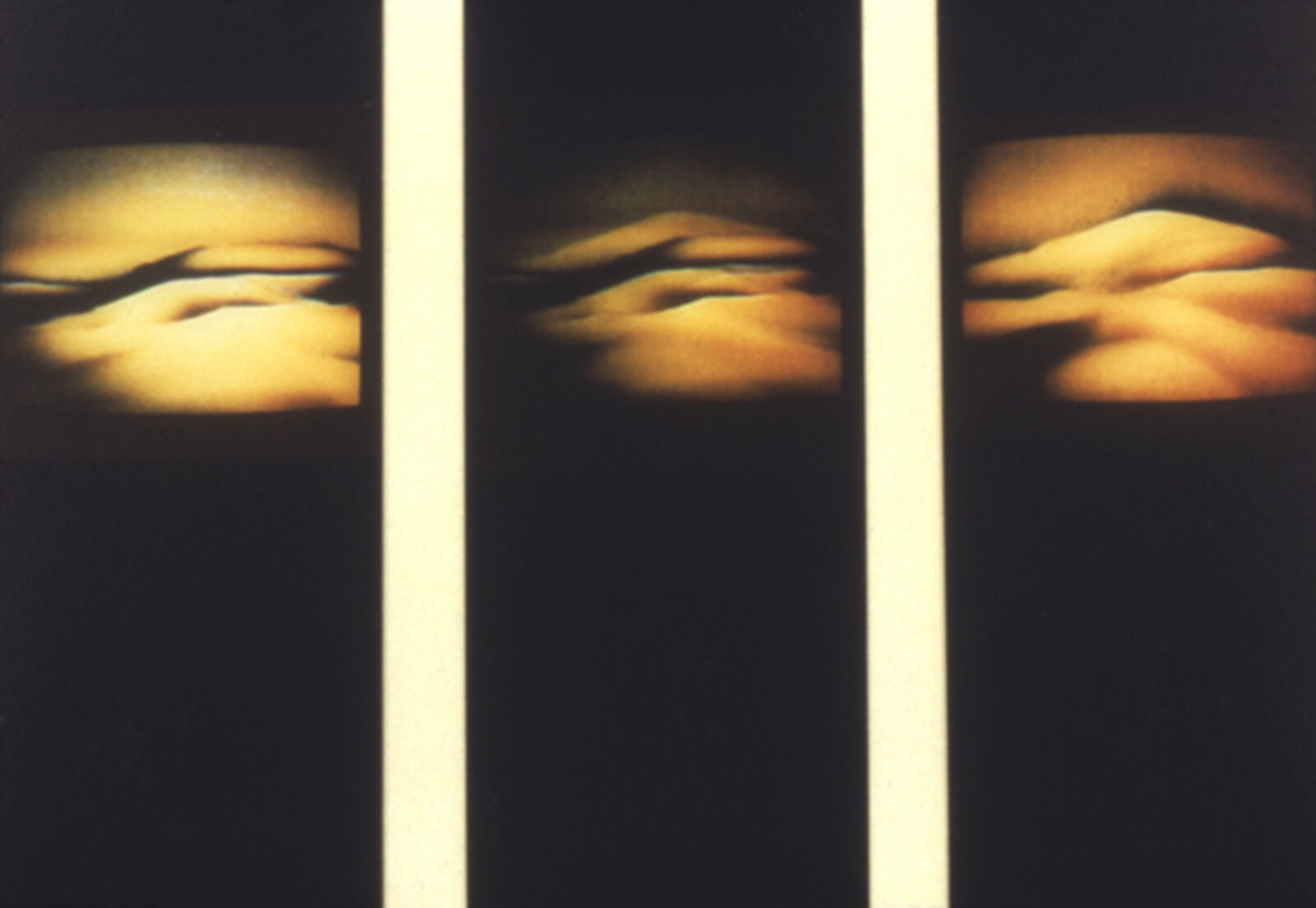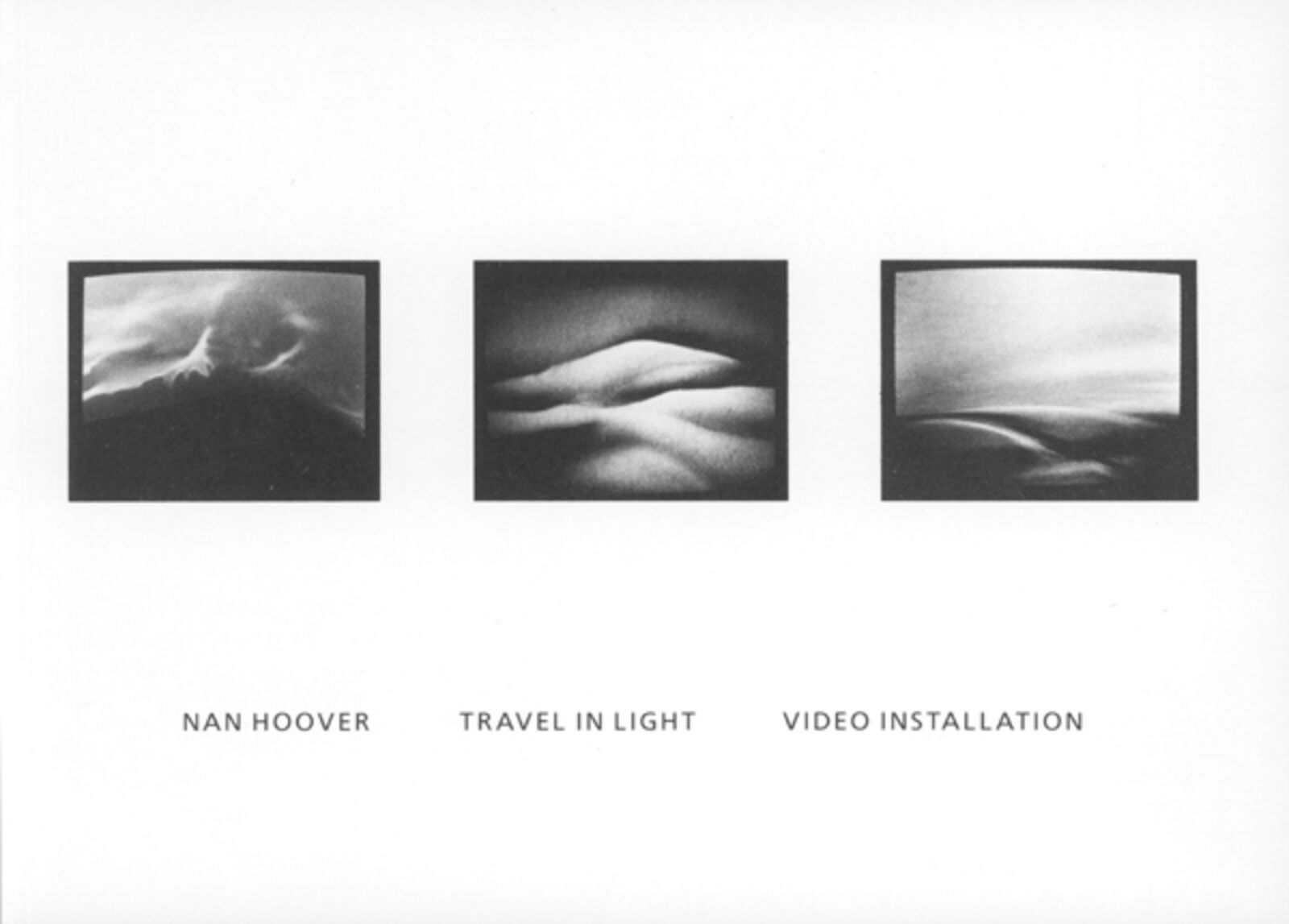Nan Hoover "Travel in Light"
10–25.10.1986
de Appel, Prinseneiland 7, Amsterdam
de Appel, Prinseneiland 7, Amsterdam

Travel in Light I

Invitation

Travel in Light II
‘One aspect remains central to Nan Hoover's video work: the conscious slowing-down of time. Normally we're so programmed that we want to see video and television images coming at us in quick succession and to arrive at a state of hyper-consciousness which, when the particular work is over, triggers off a ‘Oh, that was...’ and is followed by a value judgement. Our experience is based on tension and release. Nan Hoover sets herself a totally different task and engages our senses of sight and vision in an extremely slowed-down process. Just as in meditation we become removed from our normal feeling for time. Time is something that affects us in relationship to an event. It is therefore a variable quantity. In meditation, it sometimes seems as if we've been immersed in a subject for only a short period when in actuality a very long time has elapsed. Nan Hoover manipulates information like this. She opens up other worlds in which perception is freed of its normal limitations.
Nan Hoover uses this principle very explicitly in her video installation Travel in Light which consists of three black towers with large screen monitors. We see suggested landscapes on the three screens: a desert, mountains and rolling hills in the setting sun. In fact they were made from paper and illuminated with slowly moving light. The colours are created within the camera and the composition. Nan Hoover: ‘I wanted to give the impression of a landscape: the landscape of memory, the sort you see in daydreams.’ People waiting for a plane can gather energy from seeing images which are vaguely reminiscent of landscapes once seen, perhaps one’s present destination or a place which, in some way or other, one has an impression of. ‘It stimulates our powers of imagination and gives sense of peace and quiet before a flight.’ I particularly think that the slowing-down of the experience of time gives the insight that creates a sense of peace. More than a painting or an object, through its slowly moving images, this video has the capacity to hold the viewer’s attention for a longer period of time and even to direct inwards. These are the qualities that are ideally suited to a ‘waiting room’. Besides, the air passenger is used to looking at monitor screens because they are employed to announce information about flights and thus the imaginary landscapes on the monitors of Hoover’s installation will attract attention.
Nan Hoover has worked with video and photography for twelve years. In 1957 she had her first solo exhibition of paintings and drawings. Hoover: ‘It became clear to me in 1974 that video is the painter’s new palette. Since then I have always approached video with the eye of a painter and thus I’ve worked with colour, composition and time. Until now my video work has only been shown in art institutions. I’m convinced that now is the right moment to put video in public situations where the surroundings and the function of the space combine with the medium. Schiphol Airport fulfils these demands. The work takes the viewer on a journey through memory to a landscape which stays in recollection and it brings about a feeling of timelessness in the viewer. My interest in video has changed, I now find it exciting to have the opportunity to reach a broader public.’
The three towers with their monitors should stand in the space as sculptural forms. The video works can hopefully be transferred onto video discs that are durable and can be played uninterruptedly. In October, De Appel presented the design for a video installation to take place in the departure lounge of an airport along with a screening of three tapes, a publication and a verbal explanation by Nan Hoover. Travel in Light is her first production which breaks out of the art circuit and approaches as broad a public as possible.’
(Louwrien Wijers, ‘Before the departure. Travel in Light - Nan Hoover’, De Appel, 7 (1987) 1, p. 10.)